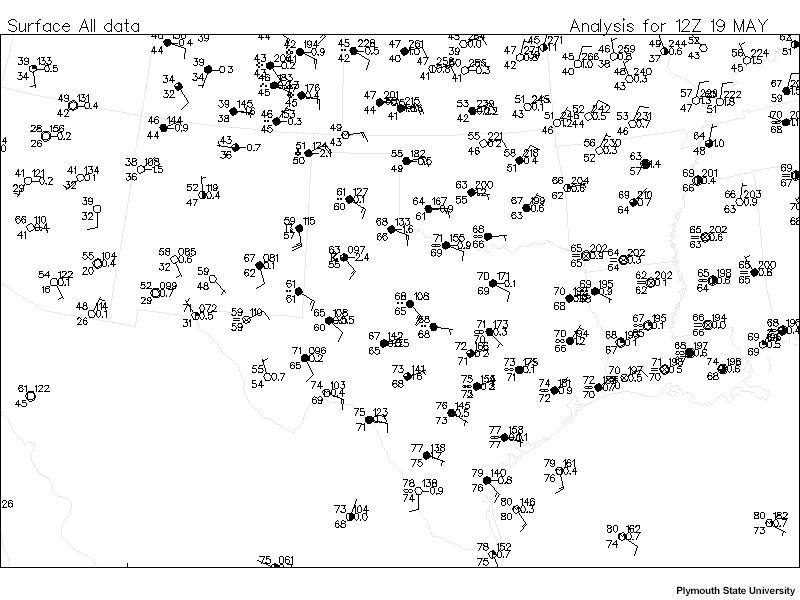Pre-Lab: Finding Fronts using Multiple Fields » Putting it All Together: Practice Examples with Station Observations » Stationary Front
Question 1 of 1
Determine the location of any surface fronts by drawing them in with the pen tool(s). Available colors correspond to the standard color schemes mentioned above.

| Tool: | Tool Size: | Color: |
|---|---|---|
Here we’ve already stated that a stationary front is present - however, if one were looking it only this map at a single time it may be difficult to determine what type the front is, as the boundary could be moving significantly over time. The wind speeds are slightly stronger on the south side of the boundary (10-15 knots across central Texas), and are coming into the frontal zone at a similar angle to the 5 to 10 knot winds across Missouri, Oklahoma and Kansas - one might guess this is a warm front.
As we glance across the map we can see a broad area of warm (60s) and moist (also 60s) southeasterly flow across most of Texas and Louisiana. To the north, we see a broad area of norhteasterly or easterly flow, with temperatures in the 40s or 50s and dewpoints around the same values. The stationary front is the boundary between these airmasses, and runs roughly from western Kentucky west-southwestward into northern Arkansas, westward through south-central Oklahoma, and then curves northward and westward into the Texas panhandle before encountering the Rocky Mountains in New Mexico.
